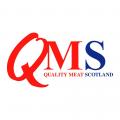
Orkney farmers learnt how managing their grazing could help improve their bottom line at a free Quality Meat Scotland (QMS) event held in Kirkwall recently.
More than 25 farmers attended the meeting to hear from New Zealand sheep and beef consultant Trevor Cook about making more from their pastures.
Mr Cook specialises in advising farmers on all aspects of production from grass-based systems and has been visiting Scotland to talk to farmers about how they can improve their grazing management since QMS first started its first Grazing Groups in 2014.
“The QMS Grazing Group and Better Grazing projects are two the most successful extension programmes I’ve seen anywhere in the world and demonstrate that cattle and sheep producers can increase their businesses profitability by utilising their grazing better,” said Mr Cook.
At the meeting in Kirkwall last week, Mr Cook explained that improving profitability comes from being able to produce more at lower cost. He added that in his experience, Scottish farmers are already productive in terms of per head performance, but there is a key opportunity for livestock producers to reduce their costs even more.
“Managing grazing can allow farmers to spend less, whilst still achieving the same production per head,” he said. “On a pence per kg of dry matter basis, grazed pastures provide the cheapest feed for ruminants. Making silage from that grass will double the cost per kg of dry matter and feeding concentrates will be four times the cost of grazed grass on a dry matter basis.”
He went on to explain that to make money from pasture, producers need to grow as much as possible and then aim to utilise at least 80% of what is grown.
“The grazing system producers operate influences how much pasture can be grown. Many pastures are only delivering half of their capability.
“By concentrating the grazing pressure and then giving pastures a rest allowing them to regrow, fast growing productive grass species are favoured. This contrasts with continuous grazing where the productive grass species are constantly grazed, and the less productive species are favoured. This is the key to growing more grass,” Mr Cook concluded.
He added that utilising the grass grown is also important to making more from pastures. Under continuous grazing, utilisation is likely to be around 50%. Controlling grazing will increase this to 80-85% of the grass grown because less is wasted.
“To grow more grass and achieve higher utilisation, farmers need to be able to concentrate the grazing pressure and then rest the pasture to allow regrowth. This is the basis of rotational grazing,” said Mr Cook.
Production is driven by the number of animals per hectare, as well as per head performance. For those who start rotational grazing, a regular observation is that they don’t have enough stock to keep up with the additional grass they grow.



Comments: Our rules
We want our comments to be a lively and valuable part of our community - a place where readers can debate and engage with the most important local issues. The ability to comment on our stories is a privilege, not a right, however, and that privilege may be withdrawn if it is abused or misused.
Please report any comments that break our rules.
Read the rules here